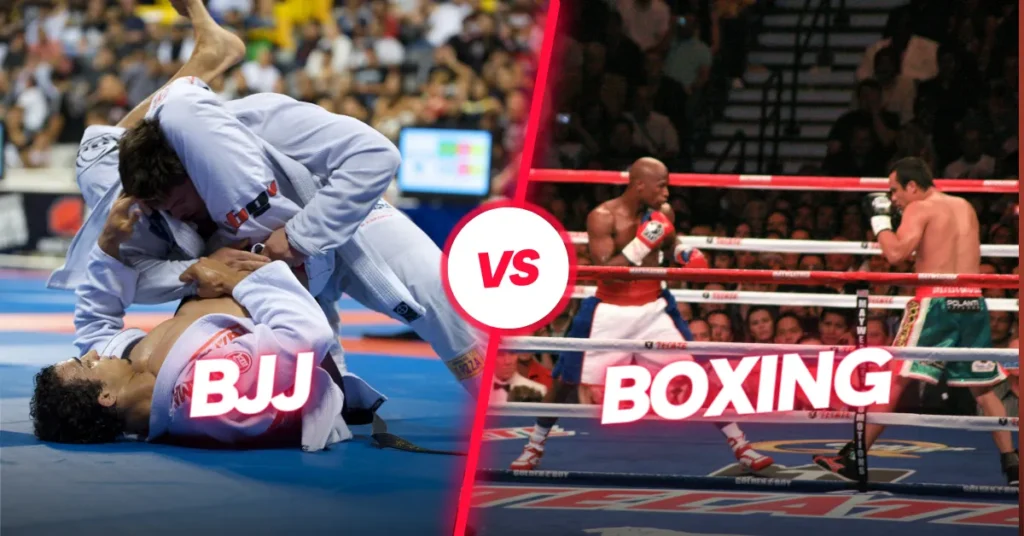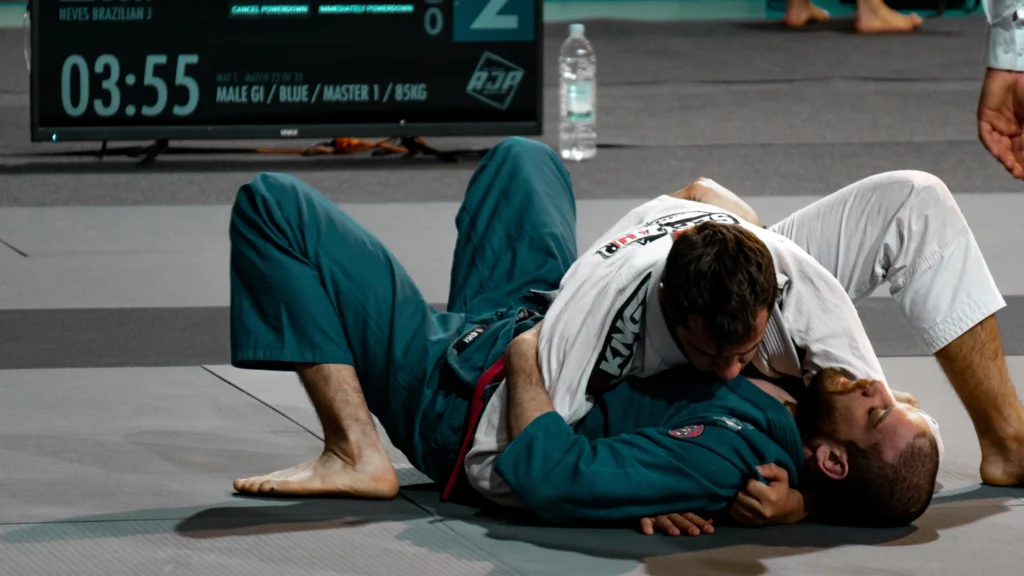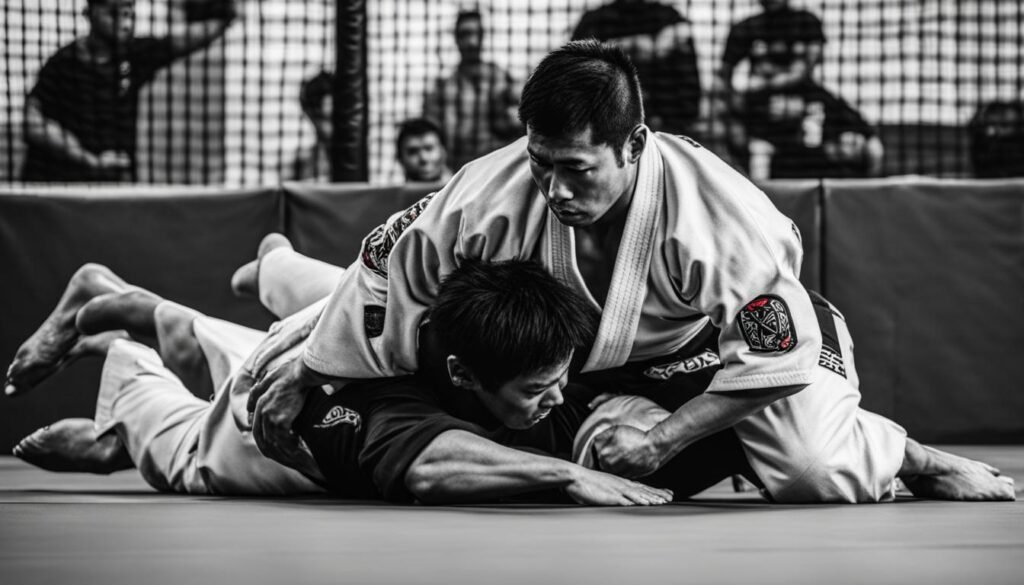Brazilian Jiu-Jitsu (BJJ) and boxing are two of the most well-liked martial arts styles. It’s challenging to choose the greatest one because they each have special benefits and distinctions of their own. This essay will examine the methods, advantages, and uses of boxing and BJJ for self-defense and fitness.
BJJ is a grappling martial art that was adapted from traditional Japanese Jiu-Jitsu. It is a technique-and leverage-based method that helps smaller people effectively defend themselves against larger opponents. However, boxing is a striking martial art that places a strong emphasis on footwork, power, and speed. It is well-known for being efficient in the world of striking sports and has been practiced for centuries.
BJJ is frequently seen to be more successful than other forms of self-defense because of its emphasis on ground fighting and submissions. It gives practitioners the ability to neutralize and render an opponent helpless, regardless of how powerful or large they are. However, boxing can be helpful for striking and keeping a safe distance, enabling people to defend themselves against an assailant in a timely and efficient manner.
Both boxing and BJJ offer a variety of advantages in terms of training and conditioning. BJJ offers a full-body exercise program that enhances cardiovascular endurance, strength, and flexibility. It also requires cerebral skills like strategic thinking and problem-solving. Contrarily, boxing is a vigorous cardio exercise that enhances coordination, speed, and agility. It also instills discipline and strengthens mental toughness.
The decision between boxing and BJJ ultimately comes down to personal preferences, ambitions, and the particular situation in which the martial art will be practiced. Each has specific benefits, be it for MMA, fitness, or self-defense. BJJ and boxing are no different. It’s critical to weigh the methods, advantages, and practical uses of every martial art to choose the one that best meets your requirements.
Table of Contents
Key Takeaways
- BJJ and boxing are two popular martial arts with their own unique advantages and differences.
- BJJ is a grappling martial art that focuses on technique and leverage.
- Boxing is a striking martial art that emphasizes speed, power, and footwork.
- BJJ is often considered more effective in self-defense due to its ground fighting and submission techniques.
- Boxing can be useful in self-defense for striking and maintaining distance from an attacker.
History and Origins of Boxing and BJJ
In the world of martial arts, both boxing and Brazilian Jiu-Jitsu (BJJ) have rich histories and fascinating origins. Let’s take a closer look at the ancient sport of boxing and the development of BJJ in Brazil.
Ancient Sport of Boxing
Boxing, as a combat sport, has a long and storied history that dates back to ancient times. In fact, the sport can be traced back to Ancient Greece, where it was practiced as early as the 8th century BCE. Back then, boxing matches were brutal and bare-knuckled, with fighters using techniques such as clinching, wrestling, and hitting their opponents while they were on the ground.
“Boxing, as a sport, has evolved significantly over the centuries, transforming from a brutal and unregulated contest into a modern and regulated sport.”
Birth of Modern Boxing
While the ancient sport of boxing has deep roots, it wasn’t until the 19th century that the modern version of the sport emerged. In 1867, the Marquess of Queensberry rules were established, introducing gloves, timed rounds, and weight divisions to the sport. These rules brought about a new era for boxing, making it safer and more regulated. Since then, boxing has continued to evolve, becoming a popular and respected sport worldwide.
Origins of Brazilian Jiu-Jitsu
The development of Brazilian Jiu-Jitsu (BJJ) can be traced back to traditional Japanese Jiu-Jitsu, which originated in feudal Japan as a method of self-defense for samurai warriors. The art was later brought to Brazil in the early 20th century by Mitsuo Maeda, a Japanese Jiu-Jitsu expert. Maeda taught the art to the Gracie family, who played a pivotal role in the development and popularization of BJJ.
Development of BJJ in Brazil
The Gracie family, led by Carlos Gracie, further refined and adapted Jiu-Jitsu techniques to create an effective martial art that focused on ground fighting and submissions. This marked the birth of Brazilian Jiu-Jitsu as a distinct and influential martial art. The Gracie family’s efforts to promote and develop BJJ in Brazil led to the establishment of the first Brazilian Jiu-Jitsu academy in Rio de Janeiro, paving the way for the worldwide spread and recognition of BJJ.
Key Differences Between Boxing and BJJ
Boxing and BJJ (Brazilian Jiu-Jitsu) are two distinct martial arts that have significant differences in their techniques, rules, and areas of focus. Understanding these differences is crucial for individuals considering which martial art to pursue or for those interested in learning more about these disciplines. Let’s explore the key contrasts between boxing and BJJ.
| Boxing | BJJ |
|---|---|
| Striking martial art | Grappling martial art |
| Emphasis on punches above the waist | Focus on takedowns and submissions |
| Fights take place on the feet | Aim to take the fight to the ground |
| Rules allow punches with closed fists | Utilizes joint locks and chokeholds |
| Focus on speed, power, and footwork | Emphasis on technique, leverage, and control |
Striking vs. Grappling
One of the most prominent differences between boxing and BJJ is the emphasis on striking versus grappling techniques. Boxing is a striking martial art that centers around punches, using a combination of jabs, hooks, uppercuts, and crosses to strike opponents. On the other hand, BJJ is a grappling martial art that prioritizes control and submissions through techniques like joint locks and chokeholds.
Boxing matches predominantly take place on the feet, with fighters utilizing footwork, head movement, and punches to defeat their opponents. In contrast, BJJ practitioners aim to take the fight to the ground, utilizing takedowns and groundwork to neutralize their opponents’ strikes and apply various submissions.
Rules and Techniques
The rules and techniques of boxing and BJJ also differ significantly. In boxing, fighters are typically allowed to punch with closed fists above the waist, targeting the head and body. The use of elbows, knees, and kicks is prohibited. In BJJ, fighters primarily engage in ground fighting, using a series of techniques to control their opponents and seek submissions, including joint locks and chokeholds.
Additionally, the training and techniques in these martial arts vary. Boxing focuses on developing speed, agility, and power through punching combinations, defensive maneuvers, and footwork. BJJ emphasizes technique, leverage, and control, requiring practitioners to master various positions, transitions, and submissions.
Best Book about Boxing
Boxing vs BJJ for Self Defense
When it comes to self-defense, both BJJ and boxing have their own unique strengths. BJJ, with its focus on ground fighting and submissions, is considered highly effective in real-life self-defense situations. By utilizing techniques that neutralize larger or stronger opponents, BJJ practitioners can successfully defend themselves even in disadvantageous positions. The effectiveness of BJJ in self-defense lies in its emphasis on leverage and technique, allowing individuals to overcome physical disadvantages through skill and strategy.
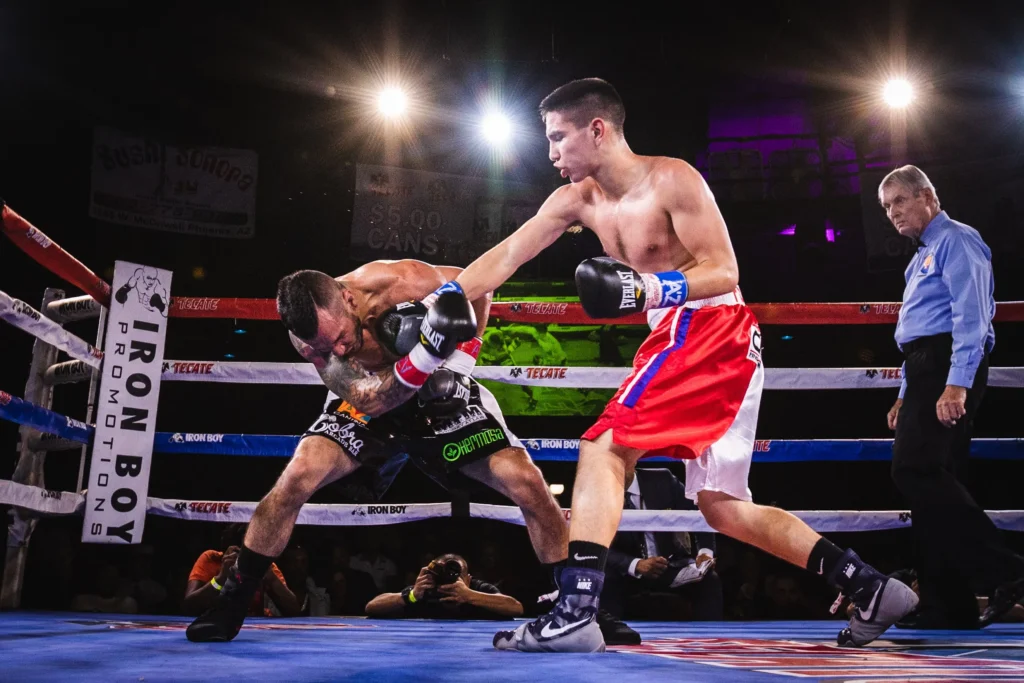
On the other hand, boxing offers its own advantages in self-defense scenarios. With its emphasis on striking and maintaining distance, boxing can be a valuable skillset for defending oneself against an attacker. The ability to deliver swift and powerful punches enables boxers to create distance and deter potential threats effectively. Additionally, boxing training instills mental toughness and improves hand-eye coordination, which are essential attributes for self-defense situations.
Ultimately, the choice between BJJ and boxing for self-defense depends on an individual’s preferences and the specific situation at hand. BJJ excels in ground fighting and submissions, offering a comprehensive skillset to handle various scenarios. On the other hand, boxing’s focus on striking and maintaining distance can be advantageous in situations where quick strikes are necessary to prevent or escape physical altercations.
It’s important to note that self-defense is a complex subject, and proficiency in either BJJ or boxing alone may not be sufficient. Combining multiple martial arts disciplines can provide a well-rounded self-defense skillset, maximizing an individual’s ability to respond effectively in different situations.
| Advantages of BJJ for Self-Defense | Advantages of Boxing for Self-Defense |
|---|---|
| Effective in ground fighting and submissions Can neutralize larger or stronger opponents Focuses on leverage and technique Develops problem-solving and strategic thinking skills | Emphasizes striking and maintaining distance Allows for swift and powerful punches Improves hand-eye coordination Builds mental toughness and discipline |
Boxing vs BJJ for Fitness and Training
When it comes to fitness and training, both boxing and Brazilian Jiu-Jitsu (BJJ) offer a wide range of benefits. Whether you’re looking to improve your physical strength, flexibility, cardiovascular endurance, or mental focus, both martial arts can help you achieve your goals.
The Fitness Aspects of BJJ
Training in BJJ provides a comprehensive full-body workout that targets various muscle groups. The grappling and ground fighting techniques in BJJ require strength, endurance, and flexibility, making it an excellent way to improve overall fitness levels. The constant movement, transitions, and takedowns during BJJ sessions engage both the upper and lower body, promoting muscle development and toning.
Additionally, BJJ training is highly demanding on cardiovascular endurance. The continuous rolling and sparring sessions provide an intense cardio workout, increasing heart rate and improving overall stamina. Regular practice of BJJ can lead to weight loss, improved cardiovascular health, and increased energy levels.
Furthermore, BJJ not only offers physical benefits but also enhances mental aspects such as problem-solving, strategic thinking, and patience. As you navigate through different positions and submissions, you engage in a mental chess match with your opponents, requiring focus and adaptability. This mental stimulation can help improve cognitive function, stress management, and mental resilience.
The Fitness Aspects of Boxing
Training in boxing is renowned for its high-intensity cardio workout and its ability to improve agility, speed, and coordination. Boxing sessions involve dynamic punching combinations, footwork drills, and defensive maneuvers, all performed with speed and precision. This constant movement and intensity help burn calories, build endurance, and improve cardiovascular health.
In addition to the physical demands, boxing also cultivates mental toughness and discipline. Punching combinations and defensive techniques require focus, concentration, and mental agility. Boxing training teaches you to stay calm under pressure, make split-second decisions, and maintain mental resilience, all of which can be applied in various aspects of life.
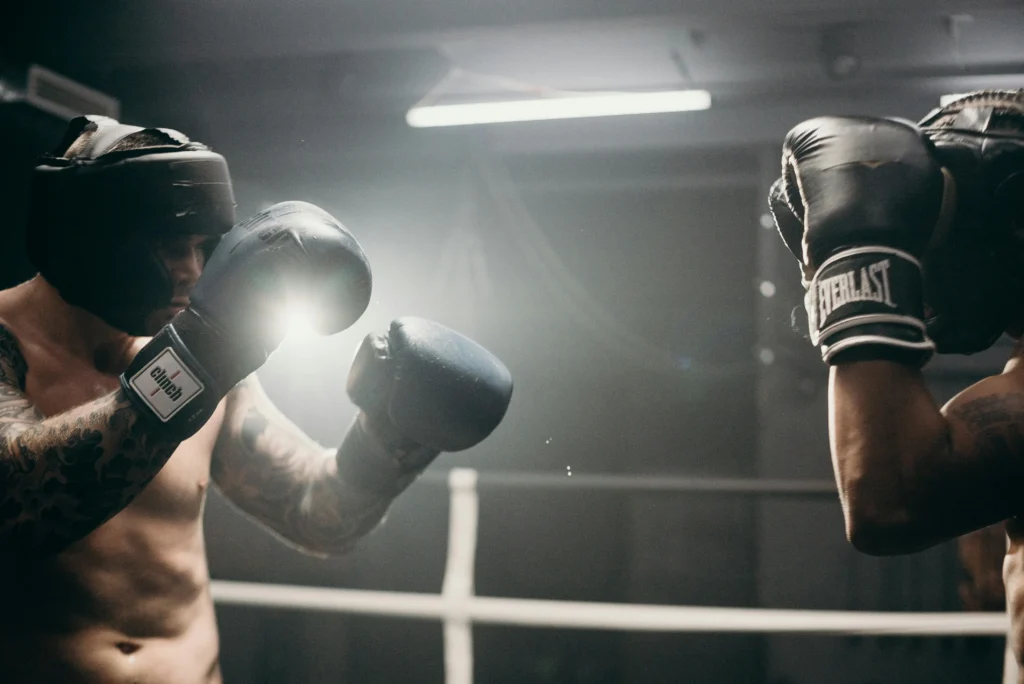
Training in BJJ vs Training in Boxing
The choice between training in BJJ or boxing ultimately depends on your personal preferences and fitness goals. If you enjoy the challenges of ground fighting, the problem-solving aspects of grappling, and a full-body workout, BJJ may be the ideal choice for you. On the other hand, if you prefer high-intensity cardio workouts, agility training, and sharpening your striking skills, boxing might be the better fit.
Many individuals choose to incorporate both BJJ and boxing into their training routine to experience the unique benefits each martial art offers. This combination allows for a well-rounded approach to fitness, providing a diverse range of physical and mental challenges.
Remember, the key to maximizing the fitness benefits of BJJ or boxing is consistency and dedication. Regular training, coupled with a balanced diet and proper rest, will help you achieve your fitness goals and reap the rewards of training in these martial arts.
| Benefits of BJJ Training | Benefits of Boxing Training |
|---|---|
| Full-body workout Improved strength and flexibility Cardiovascular endurance Muscle development and toning Problem-solving and strategic thinking Mental focus and resilience Weight loss | High-intensity cardio workout Improved agility and speed Enhanced coordination Calorie burning Mental toughness and discipline Focus and concentration Stress relief |
Must-have BJJ Book
BJJ vs Boxing for MMA
In the context of Mixed Martial Arts (MMA), both Brazilian Jiu-Jitsu (BJJ) and boxing have proven to be valuable martial arts. BJJ, known for its effectiveness in ground fighting and submissions, plays a crucial role in MMA. Many successful MMA fighters, such as Tony Ferguson and Nate Diaz, have a background in BJJ and utilize their grappling skills to control their opponents on the ground.
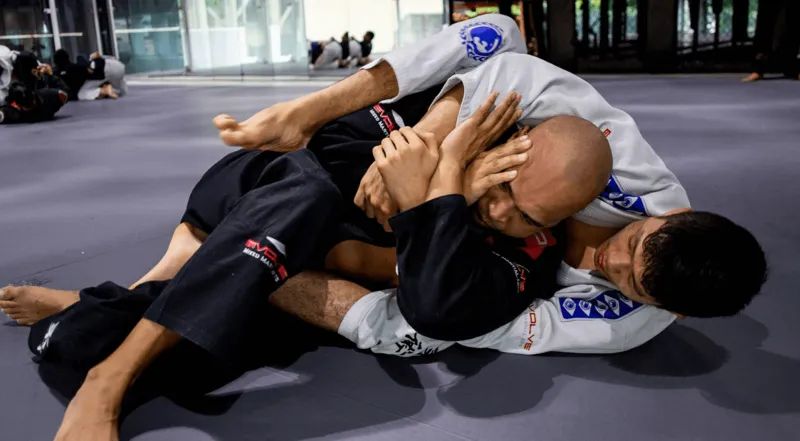
On the other hand, boxing is a valuable skill for striking and maintaining distance in MMA. Countless top-level MMA fighters, including Conor McGregor and Max Holloway, incorporate boxing techniques into their striking game, effectively delivering powerful punches and combinations inside the cage.
The choice between BJJ and boxing in MMA ultimately depends on an individual’s fighting style, preferences, and strengths. BJJ can provide a significant advantage when the fight transitions to the ground, allowing fighters to capitalize on submissions and control. Meanwhile, boxing can offer a strategic advantage by enabling fighters to effectively strike and evade opponents.
Effective Strategies in MMA
- BJJ: Utilizing BJJ techniques to obtain dominant positions, execute submissions, and control opponents on the ground.
- Boxing: Incorporating boxing techniques such as footwork, punching combinations, and head movement to strike effectively and maintain distance.
Combining both BJJ and boxing skills can create a well-rounded MMA fighter who is proficient in both striking and ground fighting. Many successful MMA fighters have a hybrid skill set, ensuring they are well-equipped to handle various aspects of the fight.
“In MMA, having a strong foundation in BJJ and boxing can give you a significant advantage. BJJ allows you to dominate on the ground, while boxing helps you control the striking range. Being proficient in both arts gives you more options and versatility in different situations.”
Ultimately, the effectiveness of BJJ and boxing in MMA depends on the individual fighter’s level of skill, strategy, and ability to adapt to the ever-changing dynamics of a fight. To excel in MMA, it is crucial to continuously develop and refine techniques from both martial arts, combining them harmoniously to maximize performance inside the cage.
Conclusion
When comparing Brazilian Jiu-Jitsu (BJJ) and boxing, it becomes evident that the choice between the two martial arts greatly depends on the individual’s goals, preferences, and the specific context in which they will be used.
BJJ is renowned for its effectiveness in ground fighting and submissions, making it a valuable skillset for self-defense situations. With its focus on technique and leverage, BJJ practitioners can neutralize larger or stronger opponents by utilizing their knowledge of joint locks and chokes. On the other hand, boxing excels in striking techniques, allowing practitioners to efficiently deliver powerful punches and maintain distance in combat scenarios.
Both BJJ and boxing offer unique advantages and can be beneficial for self-defense, fitness, and mixed martial arts (MMA). BJJ provides a well-rounded full-body workout, enhancing strength, flexibility, and cardiovascular endurance. It also sharpens mental aspects such as problem-solving and strategic thinking. On the other hand, boxing offers a high-intensity cardio workout, improving agility, speed, and coordination. It fosters mental toughness and discipline.
In the realm of MMA, both BJJ and boxing play vital roles. BJJ’s ground fighting and submission skills are essential in the grappling aspect of MMA, while boxing techniques provide crucial striking abilities and distance control. Leading MMA fighters often incorporate elements of both martial arts into their training, leveraging each art’s strengths.
In conclusion, the choice between BJJ and boxing ultimately rests on the individual’s interests and goals. While BJJ excels in ground fighting and submissions, boxing’s emphasis on striking and maintaining distance offers its own set of advantages. Whether it’s self-defense, fitness, or MMA, both martial arts provide valuable skills and can greatly benefit practitioners.
FAQ
What is the difference between BJJ and boxing?
BJJ is a grappling martial art that focuses on technique and leverage, while boxing is a striking martial art that emphasizes speed and power.
Which martial art is better for self-defense, BJJ or boxing?
BJJ is often considered more effective in self-defense due to its focus on ground fighting and submissions, while boxing can be useful for striking and maintaining distance.
What are the benefits of training in BJJ?
Training in BJJ provides a full-body workout, improves strength, flexibility, and cardiovascular endurance, and involves mental aspects such as problem-solving and strategic thinking.
What are the benefits of training in boxing?
Training in boxing is a high-intensity cardio workout that improves agility, speed, and coordination, and helps build mental toughness and discipline.
How do BJJ and boxing contribute to MMA?
BJJ is known for its effectiveness in ground fighting and submissions, while boxing is valuable for striking and maintaining distance in MMA.
Which martial art should I choose, BJJ or boxing?
The choice between BJJ and boxing depends on your goals, preferences, and the specific context in which the martial art will be used.
What is the history and origin of boxing?
Boxing has ancient roots and was practiced in Ancient Greece. The modern version emerged in 1867 with the Queensberry rules.
What is the history and origin of BJJ?
BJJ originated from traditional Japanese Jiu-Jitsu and was brought to Brazil in the 1920s by Mitsuo Maeda. The Gracie family played a significant role in popularizing the martial art.

